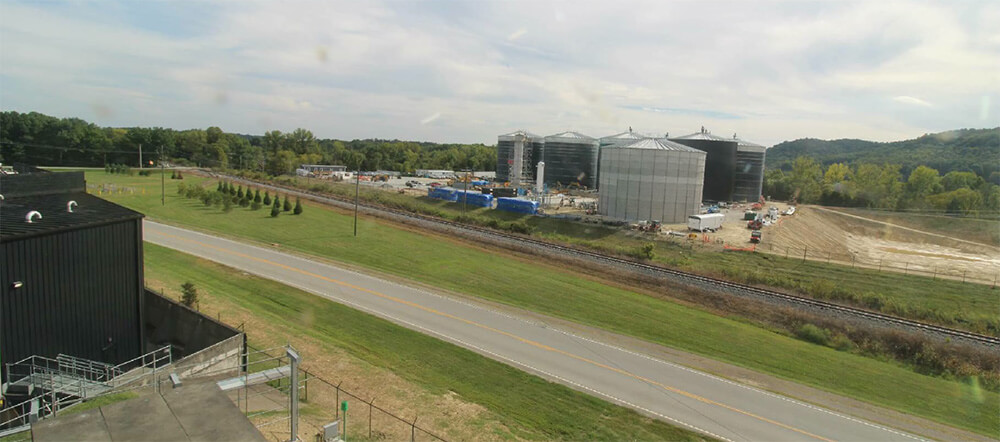Since 1795, Jim Beam has been producing one of the world’s most renowned bourbon brands. The Jim Beam Booker Noe Distillery project is a major expansion initiative aimed at increasing the production capacity of the Jim Beam operation. The distillery, located in Boston, Kentucky, is named after Booker Noe, the legendary Master Distiller and grandson of Jim Beam.
This project includes the construction of a new distillery building, which is designed to boost Jim Beam’s overall production to meet the growing global demand for bourbon. Key aspects of the project include:
- Significantly increase Jim Beam’s production capacity, allowing the brand to produce millions of additional bottles of bourbon annually
- Incorporation of environmentally friendly practices and advanced technologies to reduce its carbon footprint.
- Combining innovative new technology with traditional bourbon-making methods to preserve the quality and heritage of Jim Beam products.
- Significant investment in the local economy, creating new jobs, and supporting local suppliers and contractors during the construction phase and ongoing operations.
The Jim Beam Booker Noe Distillery project is anticipated to strengthen the brand’s position in the global market, while also committing to sustainability and community development. Further project details can be found on the Three Rivers Energy website and the Beam Suntory website.
Renewable Energy Through Organic Byproducts
Biogas is produced through the anaerobic digestion of organic materials such as the organic byproducts of the distillation process known as stillage. These materials are broken down by microorganisms in an oxygen-free environment, producing methane-rich biogas. Once produced, biogas can be refined for other uses.
The Booker Noe Distillery project includes digesters and a gas upgrading system. The digesters intake the spent distillers’ grain from the production of bourbon as a feedstock to produce biogas and natural fertilizer. The biogas goes through the gas upgrading plant to be refined into usable renewable natural gas (RNG). RNG is functionally the same as pipeline quality natural gas and can be burned in standard gas burning equipment. This process allows the corn used to make whiskey to be utilized to its fullest potential by producing a nutrient-rich natural commercial fertilizer that can be used to replenish the area’s farmland.
Once the project is completed in 2025, the anticipated benefits include:
- Produce up to 1,300,000 mmbtu of RNG
- Reduce greenhouse gas emissions of the Booker Noe distillery by 50%
- A distillery that is 65% powered by renewable natural gas
- Fertilizer to potentially support up to 33,000 acres of the surrounding farmland
- Nearly $7 million annually of economic benefit for local crop and forage farmers
Miura Steam Boilers Play a Key Role
Miura’s LX Series Boilers were the perfect choice to burn the renewable natural gas produced by the Booker Noe Distillery project. Features include:
- Horsepower: 300 BHP per boiler for a modular steam plant capable of 4,200 HP!
- Steam Output: 10,350 lbs/hr per unit for a full capacity of 144,900 lbs/hr
- The system can turn down to as low as 2,600 lbs/hr for turndown of 55 to 1.
- Operating Pressure Range: 70 – 150 PSI
- Efficiency: up to 87%
- Fuel Type: Natural Gas or RNG
- Emissions: 20 PPM NOx
- Full Steam output in less than 5 minutes
- Occupies 50% less floor space than typical firetube boilers
- Equipped with an early warning scale monitor
To learn more about this innovative project or find out how Lathrop Trotter can assist you in achieving your facility’s sustainability goals, contact us today.
Questions? Your Lathrop Trotter sales engineer can help! Contact Us



